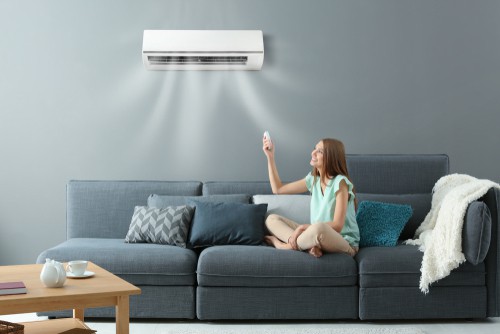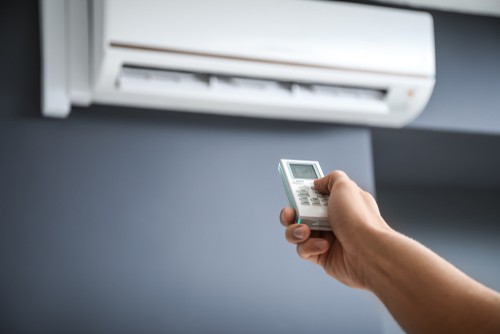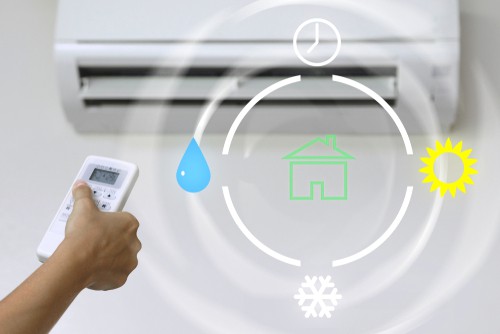Want to know when you should use the dry function on your aircon remote? Time is a precious commodity that none of us seem to have enough of. We can’t get more of it anywhere, and who wants to spend the time they have read the manual to the aircon?
Unfortunately, air conditioning can be a huge expense for many households, especially in Singapore’s hot and humid months of April and May. Reading the manual can provide insight into how to slash the electricity bill and take time. Keep reading this article to find the easiest ways to save power (and money!) on your aircon while keeping a comfortable home environment.
Like all electronics these days, air conditioners come with multiple options. There are cool, dry, and fan options. Then there is an economic cool and powerful tool. There are modes and times and settings. All of it can seem overwhelming. Singapore has a hot and humid tropical climate that requires constant air circulation to maintain at least some level of comfort, which can be incredibly costly.
However, depending on the time of year, the temperature and humidity levels may allow you to save energy by switching the mode that your air conditioner is running on. The good news is that with a simple understanding of each setting, you will be able to make the most of your aircon while keeping the cost at the bare minimum, rather than just cranking up the air conditioning to full blast every time you get uncomfortable.

Cool Mode
Cool mode is exactly what it sounds like, with the unit taking in hot air and running it through the compressor to cool the air before blowing it back out into the room. The energy expenditure of the cool mode is highly dependent upon the temperature setting of the unit and the starting temperature of the room.
For example, changing a room from 32 degrees to 25 degrees will take more energy than changing a room from 30 degrees to 25 degrees. The cool mode uses both the fan and the compressor portions of the unit. The aircon cool mode is most common during April and May in Singapore when the weather is at its hottest.
Use Cool Mode When:
– Both the temperature and the humidity levels are high
– You want the temperature to stay at a constant, cool level

Aircon Dry Mode
The dry mode in the air conditioner consumes far less energy than the cool mode, as the main purpose is to reduce the level of moisture in the air. Humidity, or the amount of moisture in the air, feels to the skin like an increase in temperature. When both high temperatures and humidity are present, the interior of a room often feels unbearable. A dry mode is a valuable tool for when the weather is humid but not necessarily too hot.
The dry mode works by sucking moisture out of the air so that the air becomes comfortable. Humid air is taken into the unit and dried on the evaporator. It is then released back into the room as dry air. The dry mode can save significant amounts of money and energy when used correctly. It cannot replace a dehumidifier; as it does not eliminate all moisture from the room, instead it keeps it at a relatively comfortable 42% to 58% humidity.
The dry mode does not blow out cold air, such as in cool mode, but the feeling is that of a cooler room by releasing dry air. As Singapore is humid all year round, the dry mode can be extremely beneficial for many families. Try using dry mode during the muggiest hours of the day, such as early morning, when humidity levels are between 65% and 85%.
Use Dry Mode When:
– The temperature is acceptable, but the humidity is too high
– You want to save electricity
– You do not need to cool the air
– Cooler months such as December and January

Fan Mode
When only fan mode is used, the compressor is turned off, and the interior fan circulates the existing air within the room. No adjustments are made to either the temperature or the humidity levels. If your room is extremely humid or too hot, fan mode will not be particularly effective in increasing comfort levels. Fan mode is beneficial for comfortable weather, where simple circulation is needed.
Use Fan Mode When:
– Both temperature and humidity are acceptable, you just need a simple movement of the air
Energy Saver Mode
Energy saver mode utilizes both the fan and the compressor, however, it works via sensors and timers. The fan runs continuously while the aircon compressor only runs until a specified target temperature is reached. When the desired room temperature has been achieved (say, 25 degrees) the compressor shuts off.

The fan remains on to circulate the air in the room, but the compressor will not begin working until the temperature has increased. The compressor will then resume functioning to cool the air until the internal room temperature has again reached the target temperature.
Use Energy Saver Mode When:
– You want to cool the air but do not mind slight fluctuations in temperature. This could be a perfect option during nighttime when occupants are asleep.
Choosing which model will work best for your situation will depend on several factors. Are you staying in the room for a long period of time? Do you have other devices, such as fans, circulating air? What are the actual temperature and humidity levels?
Is it December or January when the external temperature is lower, or is it April or May when the external temperature is quite high? What is the external humidity level? Has there been significant rainfall? Would the room be comfortable if only some moisture were absorbed?
Rather than just turning on your air conditioning unit to Cool Mode every time you get uncomfortable, think about the weather conditions to see if you can use Dry Mode, Fan Mode, or Energy Saving mode instead. By switching the mode on your air conditioner, you could increase your home’s sr home’s comfort level and save money on aircon energy costs!
